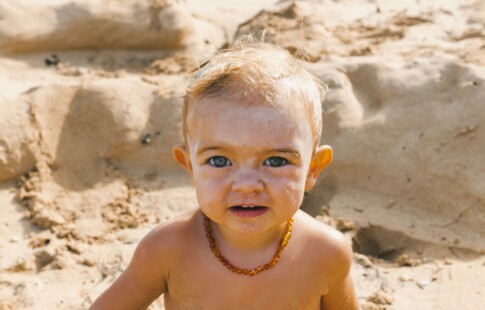
How Plastic Pollution Infiltrated a Remote Island’s Shore
We are reader-supported. When you buy through links on our site, we may earn affiliate commission.
We usually think of plastic pollution as a problem for crowded beaches or heavily populated events. Anywhere there is a concentration of people, there will inevitably be waste scattered across the landscape. What most people don’t realize is that densely populated areas are not the only ones affected by garbage. The highest density of plastic pollution ever recorded is miles away from any humans on a small, uninhabited island in the South Pacific. Here’s how plastic pollution infiltrated this remote island’s shores.
Visiting Henderson Island
Henderson Island, in the eastern part of the South Pacific, is an idyllic tropical paradise. No humans live on the island itself — in fact, it is more coral atoll than island, really — so why is it the most polluted stretch of land in the entire world?
Researchers have estimated that by 2017, nearly 18 tons of plastic pollution infiltrated this remote island due to the changing of the tides. As many as 13,000 new pieces of plastic waste wash up on the island’s shores every day.
The tiny island, positioned roughly between Easter Island and Fiji, is in the Pitcairn Island Group. It was one of the last few places on Earth to remain untouched by human hands. But even this formerly unspoiled island paradise can’t escape the thousands of tons of plastic waste people are dumping into the ocean every year.
The Plastic Plague
Plastic is one of the cheapest types of packaging known to man. Its use has been widespread since it entered the commercial market in 1872. Since then, we’ve produced more than 9 billion tons of plastic in its various forms, much of which has ended up in landfills and the ocean. It takes centuries to break down. At this point in time, 92% of dead seabirds have ingested plastic up to 5% of their body weight. Bottle caps in particular can injure or kill birds, mammals, sea turtles or other marine animals.
There are five massive accumulations of plastic in the world’s oceans, the largest of which is called the Great Pacific Garbage Patch. It’s twice the size of the state of Texas and sits between California and Hawaii, covering roughly 1.6 million square kilometers of ocean.
Another of these massive garbage patches — known as the South Pacific Gyre — is in the South Pacific, near the Pitcairn Islands. The result is tons of garbage washing up on shores that would have otherwise remained pristine.
Conservation Efforts
Henderson Island isn’t just one of the world’s few remaining uninhabited spaces — the United Nations considers it to be a World Heritage site. It is also one of the biggest marine reserves on the planet.
One year after we discovered the massive blight of plastic pollution that infiltrated this remote island, there are still no plans for cleanup efforts. Most conservation efforts focus on protecting nesting seabirds from the Pacific rats that have made their way to the island.
There are things we can do from home, though, to reduce the amount of plastic that makes its way to Henderson Island’s shores. Recycle everything you can. If you go to the beach, pick up plastic waste and dispose of it properly instead of allowing the tide to wash it away. Take steps to reduce your reliance on plastic packaging, whether that means shopping at a zero-waste grocery store or taking time to recycle all your packaging.
We might not be able to travel to Henderson Island to pick up all the trash littering its shores, but we can make small changes here at home to reduce the amount of plastic that ends up in our oceans. If we can stop dumping waste into the ocean, someday there won’t be anything to wash up on these otherwise uninhabited islands. The results might not be immediate, but in the long run, the island will recover and may even find itself a pristine paradise once again.
As many as 3,300 pieces of plastic end up on the shores of Henderson Island every day. If we can reduce that by one or two pieces every day, eventually we will get the plastic waste out of our oceans — and that is a goal we can all be proud to be working toward.
Share on
Like what you read? Join other Environment.co readers!
Get the latest updates on our planet by subscribing to the Environment.co newsletter!
About the author

Jane Marsh
Starting from an early age, Jane Marsh loved all animals and became a budding environmentalist. Now, Jane works as the Editor-in-Chief of Environment.co where she covers topics related to climate policy, renewable energy, the food industry, and more.





